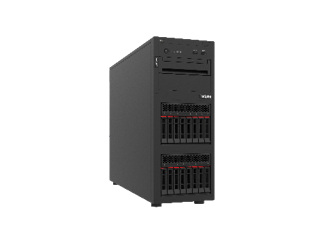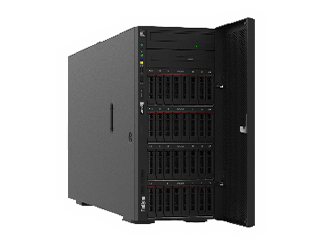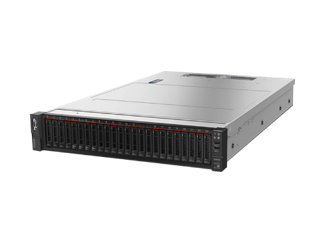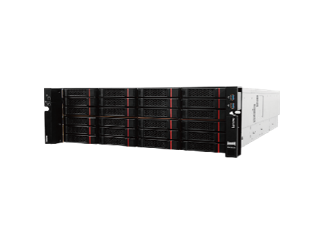35μs Delay, 400 Nodes Managed by a Single Volume
LoongShine LeoStor adopts the Gen3 converged architecture technology, the excellent parallel algorithm, and the storage technology of" direct storage hard disk without SSD cache" make the data storage more reliable. The advanced erasure code technology, with performance comparable to the replica mode, can obtain up to 94% of the available space, and save customers' investment costs.
Based on the design concept of software-defined storage, LeoStor can highly adapt to x86 platform server platforms such as Intel, AMD, Megacore, and Haiguang.Feiteng,Kunpeng and other ARM server storage platforms, as well as compatibility The V4 and V10 versions of the Galaxy Kirin operating system have obtained compatibility certification.
Technical characteristics
Loongshine LeoStor is a next-generation unified storage system that integrates "file", "object", "block" and "big data". NAS and object files can realize data interoperability. The system has rich storage protocols, and supports hard quota and permission management and restful based on directory and user API interface, which can be deployed as multi-tenant, high-performance cloud storage.
-
-
Based on the global unified view file system conforming to POSIX standard, there is no need for secondary development or recompilation. From R&D to production, users can use a set of applications, making the R&D of high-performance computing easier; At the same time, LeoStor supports HDFS interface, and the big data analysis software originally running on Hadoop can run on LeoStor parallel storage system without secondary development.
LeoStor supports replica and N+M: M erasure code data redundancy model, with a maximum storage utilization of 94%. N+M: M erasure code technology not only supports the protection of M nodes (ServerRaid), but also supports the protection of M hard disks (DiskRaid), leading competitors and Ceph series technology.
LoongShine LeoStor has powerful directory management technology, which can independently design redundancy mode, hard quota and permission scheme for each mounted directory; Support hierarchical storage technology, which can divide hard disks with different performance such as mechanical disks and SSD disks into different directories, or automatically migrate SSD hierarchical data to SATA disks according to the data lifecycle strategy, and the original access path remains unchanged; At the same time, data can be automatically archived to "near-line warm disk storage" and "offline Blu-ray storage" through data lifecycle strategy.
LoongShine LeoStor can hook up almost all storage devices and server devices in the network, including traditional FC-SAN, IP-SAN storage devices and storage servers.Use LeoStor tiered storage technology, which can benefit almost all old devices, through powerful LeoRaid data protection mechanism performs cluster protection of hard disks and nodes, and can fail up to four nodes or four hard disks at the same time. In combination with LeoStor's rich storage output protocol and file quota management, old devices will be rejuvenated.
Single node / Multiple nodes / Mute / Full flash / mass
The LoongShine LeoStor DF storage node adopts a soft and hard decoupling scheme. The hardware scheme is very flexible. It can be adapted to its own LongShine hardware equipment, as well as third-party Lenovo, Dell, Supermicro, Sugon, Seagate, PowerLeader, Tianxin Gu'an and other hardware products, as well as Datang, Dapu Micro, Changjiang and other domestic hard disks.
LoongShine DF storage nodes can be deployed into single-node scheme and multi-node cluster scheme, and the number of nodes can range from 1 node to 4096+nodes. Among them, multiple storage nodes can form a symmetric cluster scheme or cooperate with DF-MDS metadata nodes to form an asymmetric cluster scheme.
-
-
The operating noise of DFT-1600 is only 29dBA.is a tower type silent full-flash high-performance storage specially designed for open office environment. It is convenient to move and place, and can be used by one or more people. It meets the scene requirements of CAD design, 4K/8K offline editing, small supercomputing, big data analysis, teaching, AI algorithm training, etc.
Single node sub-item Describe Hardware platform Lenovo ThinkSystem ST250 v2 CPU Intel Xeon E-2300 Series Processor Memory 64 GB of 3200 MHz TruDDR4 ECC Network file 4K IOPS[1] Read: 100K, write: 70K, 7:3 Read and write mix: 80K Network file bandwidth[1] Read: 4GB/s, write: 2GB/s, 7:3 mixed read and write: 3.2GB/s Network file delay[1] Read: 750 μs. Write: 960 μs. 7:3 Read and write mix: 830 μs SAS/SATA SSD drawer Minimum: 6 Slots, maximum: 12 Slots Single disk capacity Minimum: 1.6TB, maximum: 15.36TB Network port 1* Mellanox ConnectX-5 10/25GbE 2-Port Operation noise 27.6 dBA (Typical), 29.0 dBA (Max) Size 579 x 298 x 763 mm Weight About 23.6 kg
-
-
The LoongShine DFE-1200S is a massive high-performance storage node solution based on Seagate Exos E expansion enclosure.supports Exos E 4U 106 and Exos E 5U The 84 expansion cabinet has the advantages of high capacity density and mechanical disk linearity, and has a high cost performance. Benchmarkable with JBOD GPFS high-performance computing scenarios of I/O nodes, video surveillance storage scenarios that support video search and analysis functions, massive electronic bills scenarios of near-line or temperature data, and landscapes that require both capacity and performance such as land and resources geographic information, oil exploration, meteorological satellites, and mining.
Single node sub-item Describe DF-E I/O node SR665 v2 AMD EPYC 7003 Seagate expansion enclosure (1) Exos E 5U 84, 84 bay, dual-control redundancy Seagate expansion enclosure (2) Exos E 4U 106, 106 drawer, dual-control redundancy DF-E drawer type U.2 NVMe SSD or SAS/SATA SSD Expansion enclosure drawer type SAS/SATA SSD Single node drawer Min: 84 Slots, Max: 120 Slots Maximum capacity 2.4PB Network file performance 4K IOPS: 360000, bandwidth: 18GB/s Network port 1* Mellanox ConnectX-6 10/25GbE 2-Port
2* Mellanox ConnectX-6 Dx 100GbE 2-port (Ethernet) or
2* Mellanox ConnectX-6 HDR/200GbE 1-port VPI (IB network)
-
-
The LoongShine DF2400 has excellent performance and can reach one million IOPS per node. It is a full-flash high-performance storage system specially designed for high-performance computing, which meets the needs of scenarios such as East Digital West Computing, Supercomputing Center, high-performance computing, big data analysis, video analysis, financial quantitative analysis and EDA design.
Single node sub-item Describe Hardware platform SR665 v2 CPU AMD EPYC 7003 "Milan" families of Processors Memory 512 GB of 3200 MHz TruDDR4 Network file 4K IOPS[1] Read: 1400K, write: 1050K, 7:3 Read and write mix: 1200K Network file bandwidth[1] Pressure read: 40GB/s, write: 20GB/s, 7:3 mixed read and write: 30GB/s
single stream read: 10GB/s, write: 7GB/sNetwork file delay[1] 4K pressure reading: 390 μs. Write: 720 μs. 7:3 mixed reading and writing: 580 μs
8K single-stream read: 35 μs. Write: 55 μsU.2 NVMe SSD drawer Min: 8 Slots, Max: 32 Slots Single disk capacity Minimum: 800GB, maximum: 15.36TB Network port 1* Mellanox ConnectX-6 10/25GbE 2-Port
2* Mellanox ConnectX-6 Dx 100GbE 2-port (Ethernet) or
2* Mellanox ConnectX-6 HDR/200GbE 1-port VPI (IB network)
Video monitoring / electronic bill / PACS / HPC / mining / cloud storage
LoongShine LeoStor advances side by side in performance, capacity and function, and can be widely used in various industries. In terms of comprehensive performance, 48 disks U.2 NVMe disks, 80 disks of GPFS technology that outperform competitors; In terms of capacity, 95PB of usable capacity of a single volume, with 200+storage nodes, is the world leader; In terms of functions, it meets the complex management and application requirements of cloud computing platform and high-performance computing.











